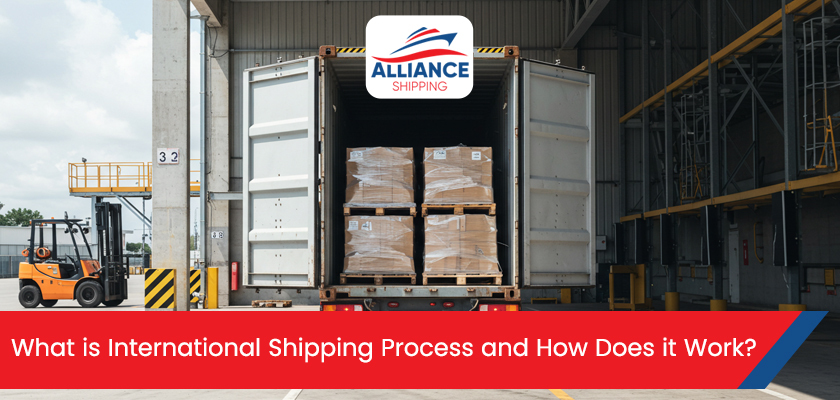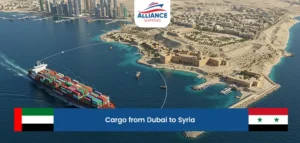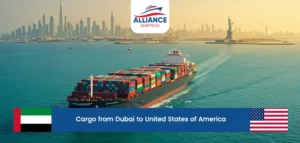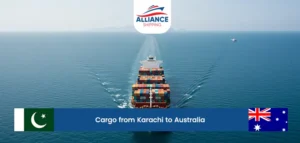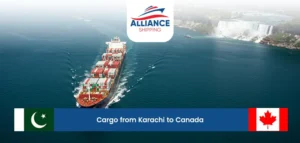International shipping is the process of moving any physical item, small or bulky, from one point in a country to another point in a different country via sea, air, land, or rail. It may sound easy, but each type of shipment, namely domestic and international, has its own set of challenges.
Are you aware that between 1990 and 2021, the volume of cargo transported globally increased from 4 to nearly 11 billion tons? A massive increase in 2021, and it is destined to increase further as the consumer base needs to be met. Business owners want to avoid this hassle and hire someone who understands international shipping rules and regulations, so their cargo is safely delivered to its destination.
Alliance Shipping has prepared an informative article to educate individuals and business owners regarding what international shipping is, how international shipping works, and what makes it complete.
What is International Shipping?
International shipping is a complex process of moving any cargo, from one point in a country to another point in a different country via sea, air, land, or rail, while following the rules and regulations. One must be familiar with all the policies so that international shipping, along with freight clearance, is possible. You can take a look at our What Shipping Is article.
If you want to go for international shipping, you must be familiar with the following key components in international shipping.
The Key Players in International Shipping
- The Shipper/Exporter: The individual or business sending the goods.
- The Carrier: The company responsible for the physical transportation (e.g., shipping lines, airlines, trucking companies).
- The Freight Forwarder: An agent that organizes and manages the entire shipping process on behalf of the shipper.
- Customs Authorities: Government agencies responsible for regulating and inspecting goods entering or leaving a country.
- The Consignee/Importer: The person or business receiving the goods.
What is International Shipping Process?
International shipping process is a series of organized steps that are followed to move any cargo from one country to another across international borders. This process includes the physical movement via sea, air, land, or rail, as well as the administrative procedures required for compliance with customs, trade regulations, and international shipping laws.
International shipping process involves multiple parties, which include shippers, freight forwarders, carriers, and customs authorities, to ensure that cargo is properly packaged, documented, cleared, and delivered to the final destination safely and legally.
Step-by-Step International Shipping Process

Step 1: Preparation and Booking of International Shipment
Begin by finalizing your budget, delivery time, and cargo shipping method, and then you should get in touch with a shipper or freight forwarder like Alliance Shipping. You and your receiver must agree upon the responsibility for costs and risks. This is done using terms called Incoterms. At this stage, it’s also important to properly package and label the goods to ensure they travel safely and meet international standards.
Step 2: Export Haulage and Customs Clearance
Once your cargo is ready, it is moved from your location to the departure point, like a port or airport. This is called export haulage. Before the cargo leaves the country, customs paperwork must be prepared and submitted to the local authorities. Common documents include a commercial invoice (which shows the sale details), packing list, and certificate of origin (which shows where the goods were made). These documents are essential to get permission to export the goods.
Step 3: Main Carriage
This is the longest part of the international shipment. Cargo is loaded onto a cargo ship, plane, or truck, depending on the method chosen. A key document here is the Bill of Lading (for sea freight) or Air Waybill (for air freight). This acts like a receipt and contains important shipment details, including the cargo owner and its destination.
Step 4: Import Customs Clearance
When the cargo reaches the destination country, it must be cleared by local customs before it can enter. A customs broker usually helps with submitting the right paperwork and making sure all rules are followed. The shipment may be checked or inspected by customs officers. Any import duties, taxes, or other fees must be paid before the goods are released.
Step 5: Import Haulage and Final Delivery
After customs clearance, the goods are transported from the port or airport to the final delivery address, such as a warehouse, store, or customer’s location. This last part of the journey is often called “last-mile delivery.” Once the cargo arrives and is received by the buyer, the shipping process is complete.
Key Documentation and Why It Matters
- Commercial Invoice: This is the main document used by customs to assess the value and type of goods. It includes details like the buyer, seller, item descriptions, prices, and payment terms.
- Packing List: A detailed list of everything in the shipment. It helps customs and logistics providers verify the contents and match them with the invoice.
- Bill of Lading (B/L) or Air Waybill (AWB): This serves as proof of the shipping contract, outlines the journey, and may act as the title to the goods. Without it, the consignee cannot claim the cargo.
- Certificate of Origin: This document proves where the goods were made, which is important for applying the correct duties or qualifying for trade agreements.
Small errors like missing information, incorrect values, or mismatched documents can trigger customs inspections, hold shipments at ports, or even result in fines. Documentation issues are one of the most common reasons for delays in international shipping. Making sure every document is complete, consistent, and accurate helps prevent costly disruptions and keeps your cargo moving without unnecessary stops.
How Learn Logistics with Alliance Shipping is Important for You
In this part of the Learning Logistics with Alliance Shipping series, we’ve walked through the key stages of the international shipping process. We’ve also highlighted the vital role of essential documents like the commercial invoice, packing list, bill of lading, and certificate of origin in ensuring shipments move smoothly across borders.
Success in global shipping depends on three core factors: careful planning, accurate documentation, and reliable logistics partners. By understanding the process and working with experienced freight forwarders and customs brokers, businesses can reduce delays, avoid costly errors, and build a stronger supply chain.
As international trade continues to grow, logistics knowledge becomes even more valuable. If you are looking for a reliable freight forwarding company, reach us out on Whatsapp or email us at manager.dxb@theallianceshipping.com.


